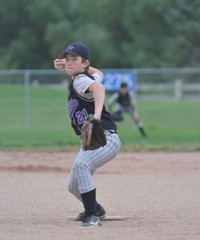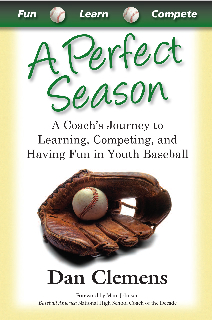The Yellow Jackets youth baseball team I was coaching couldn't seem to do anything right. We were enduring a 13-1 pounding, having made more than our share of blunders. Batters swung at bad pitches and watched others float through the zone for strike three. Pitchers had trouble throwing it near the plate, and when they did, the other team crushed the ball. Our fielders, perhaps distracted by the merry-go-round of base runners, committed five errors in the first three innings.
Early on it was clear we'd have to endure one of those nights where we simply didn't have it. My strategy as a coach was to teach my players as much as I could, get through the game as quickly as possible, and turn my attention to the next game. Easier said than done. These are tough games on coaches.
In the top of the fourth our opponents had runners on second and third with two outs and our pitcher, the fourth of the game, induced the batter to hit a high pop-up on the infield. This would surely be the third out and allow us to bat in the bottom of the fourth. If we didn't score three runs, the game would, mercifully, be over. 
As the ball topped out about 120 feet above the pitcher's mound, I heard nothing. No fielders were calling for the ball. In fact, none seemed to be moving to make the play. They all stood as if in quick-dry cement looking back and forth at each other and the ball. On the North Atlantic, you'd be hearing shouts from the crow's nest, "Iceberg! Iceberg!"
During re-entry the ball picked up speed and "splashed down" about equidistant from the pitching mound and first and second bases. Our nearest fielder was the second baseman.
Since there were two outs, their base runners were moving on the play. When our first baseman realized that no one had caught the ball, he ran over and scooped it up - on the third bounce - and fired it to the catcher, who applied the tag on the sliding runner a split-second too late. Instead of being out of the inning, we had given up two more runs and were now behind 15-1.
Frustrated, I took four quick steps out of the dugout and then stopped. What could I say to make it a teachable moment? I stood, hat in hand and jaw wide open. Staring at the blank expressions on the faces of my players, I was just as speechless as they were moments ago when the ball was in the air.
A voice in the back of my head was the only thing I heard. It screamed, "They're 12 years old, for crying out loud! How many times have we told them to talk to each other? How many times have we told them to be aggressive and go for pop-ups in the infield? Didn't we spend several minutes on this at practice last week? Do we really look that inept and poorly coached?"
It's times like this when a coach's mounting aggravation can easily turn into sarcasm. But it can just as easily be turned into existential humor. Because there didn't seem to be any logical explanation for what was happening, perhaps the best way to respond - at least to myself - was with a classic "koan," in which a Zen Buddhist sage poses a unsolvable question in order to teach and test a student's ability to use insight. You may not know them as koans, but everyone is familiar with at least a couple; one is "If two hands clapping make a sound, what is the sound of one hand clapping?", another is the famous riddle, "If a tree falls in the forest and there's nobody there to hear it, did it make a sound?"
So, as I watched our pitcher kick the dirt off the rubber and begin to dig in against the next hitter, I asked myself a question in the form of a baseball koan: "If a batter hits a pop-up and no infielder calls for it, does the ball hitting the ground still make a sound?" The tiny voice in the back of my head replied with a chuckle, "It might, but nobody will be able to hear it over the smack of the coach's palm striking the middle of his forehead!"
As Zen practitioners know, the answer to a koan comes through contemplative meditation, not Western reasoning or logic.
That's also true of our current losing streak.
Second part of a three-part series
 Adapted from the book, A Perfect Season: A Coach's Journey to Learning, Competing, and Having Fun in Youth Baseball (Quiet Path 2010) by Dan Clemens. It is available at Amazon.com, Barnes and Noble, and other bookstores.
Adapted from the book, A Perfect Season: A Coach's Journey to Learning, Competing, and Having Fun in Youth Baseball (Quiet Path 2010) by Dan Clemens. It is available at Amazon.com, Barnes and Noble, and other bookstores.
Dan Clemens is a leadership and communications consultant, and has been a youth coach for 10 years. You can email him at Dan@CoachClemens.com.
Posted November 23, 2011








